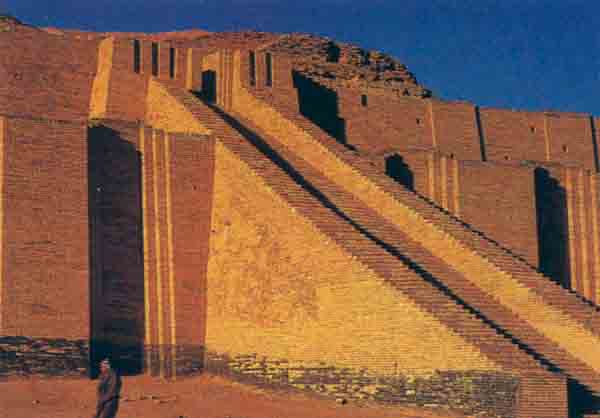
Huge stepped structures called ziggurats are well-known from the third and second millennia B.C. in Mesopotamia. One of the most famous examples is the ziggurat of Ur, built about 2100 B.C. Originally, this ziggurat had four stages or steps; each of the upper three was smaller than the one below. A stepped ramp ascended to all the stages. The first, tallest stage and its steep ramp, seen here, have been restored by the Iraqi authorities to their original size. Author Zertal suggests that the stepped ledges and ramp of the Mt. Ebal altar reflect architectural traditions of Mesopotamian ziggurats. The altars of Solomon and Ezekiel described in the Bible also resemble Mesopotamian ziggurats. However, the design of the distinctive Mesopotamian ramp was modified in the later Israelite versions. The Israelite ramps were less steep than those of the Ur ziggurat and, as described in Exodus, they did not have steps: “Neither shalt thou go up by steps unto mine altar … ” (Exodus 20:26).
Already a library member? Log in here.
Institution user? Log in with your IP address.

